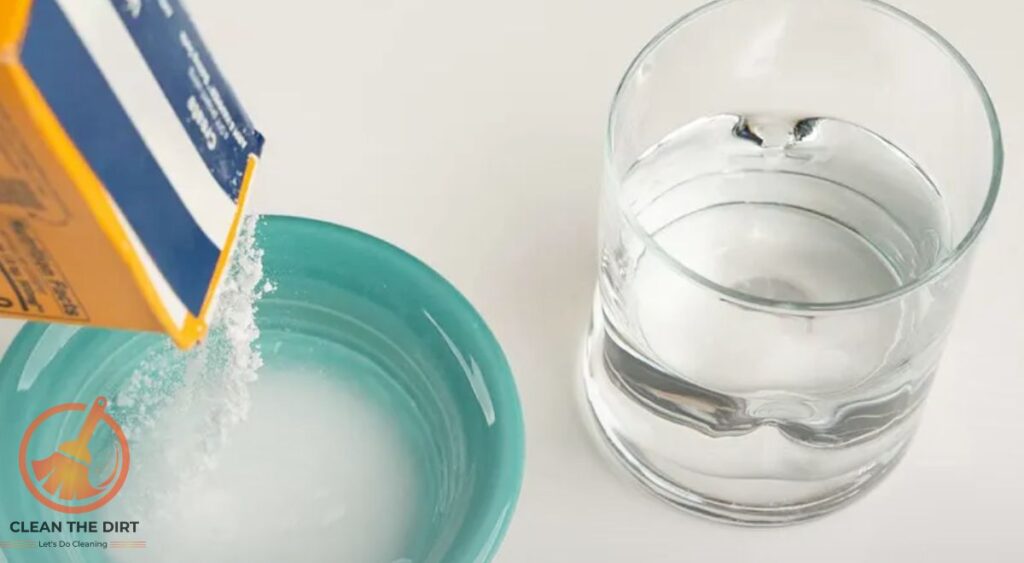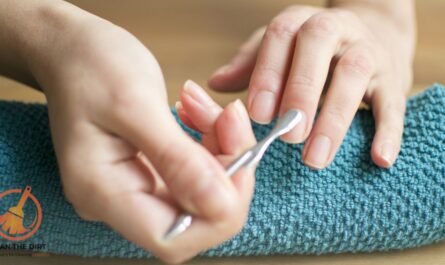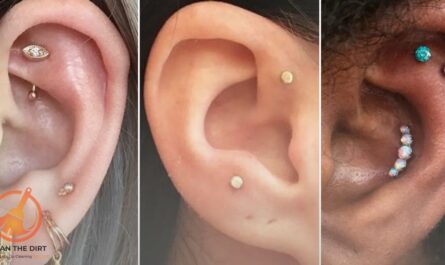Table of Contents
Introduction
Have you ever wondered how to clean your ears with hydrogen peroxide effectively and safely? Ear hygiene is often overlooked, but it’s crucial for maintaining healthy ears and preventing problems like earwax buildup and infections. While there are various methods for cleaning ears, using hydrogen peroxide has gained popularity due to its effectiveness and accessibility.
In this comprehensive guide on how to clean ears with hydrogen peroxide, we’ll go into detail on how to clean your ears with hydrogen peroxide, covering everything from its benefits to how to use it safely. So sit back, relax, and discover the best way to keep your ears healthy and clean. Let’s get started on our journey.
Why Clean Your Ears With Hydrogen Peroxide?
Why should you consider cleaning your ears with hydrogen peroxide over other methods? Let’s explore the benefits of this guide on how to clean your ears with hydrogen peroxide.
1. Effective Wax Removal
Hydrogen peroxide is renowned for its ability to dissolve earwax, making it easier to remove and reducing the risk of impaction. Unlike cotton swabs, which can push wax deeper into the ear canal, hydrogen peroxide safely breaks down and loosens stubborn buildup.
2. Antimicrobial Properties
Hydrogen peroxide also exhibits antimicrobial properties, which can help prevent ear infections by eliminating harmful bacteria and fungi. Regular use of hydrogen peroxide may help maintain a healthy balance of microorganisms in the ear canal.
3. Safe and Gentle
Compared to some alternative methods, such as ear candling, hydrogen peroxide is considered safe and gentle, with minimal risk of injury or damage to the delicate structures of the ear. It’s suitable for most individuals, including children and those with sensitive ears.
4. Affordable and Accessible
Hydrogen peroxide is easily available at most drugstores and is inexpensive, making it a convenient choice for at-home ear care. With a simple solution, you can start ear cleaning without the need for specialized equipment or professional assistance.
In conclusion, cleaning your ears with hydrogen peroxide offers an effective, safe, and affordable solution for maintaining ear hygiene and health. Next, we’ll explore how to clean your ears with hydrogen peroxide. Maintaining cleanliness across various body parts is essential for overall well-being. While focusing on cleaning ears with hydrogen peroxide, it’s equally important to extend this diligence to other areas of the body like cleaning your teeth with baking soda to freshness and brightened smile and also cleaning earring holes for your perfect health and well-being.
How to Clean Your Ears With Hydrogen Peroxide? Step-by-Step Guide
Ready to learn how to clean your ears with hydrogen peroxide? Follow these simple steps for safe and effective ear cleaning.
1. Prepare the Solution
In a clean container, mix equal parts of hydrogen peroxide and warm water. Ensure the solution is at room temperature for comfort and effectiveness.

2. Position Yourself
Tilt your head to the side so that the ear you’re cleaning is facing upwards. This will help the solution flow into the ear canal more easily.
3. Administer the Solution
Using a clean dropper or ear bulb, carefully insert the solution into your ear canal. To release a few drops of the solution, gently press the bulb.
4. Allow the Solution to Work
Keep your head tilted for a few minutes to allow the hydrogen peroxide to soften and loosen any earwax or debris. A fizzing or bubbling sound that you may hear is usual.
5. Drain and Repeat
After a few minutes, tilt your head in the opposite direction to allow the solution to drain out of your ear. Gently pat the outer ear with a clean towel to remove any excess solution.
6. Repeat if Necessary
If you still have earwax or debris in your ear, you can repeat the process with the other ear or wait until the next session. Avoid overcleaning your ears, as this can irritate them.
7. Follow-up Care
After cleaning your ears, avoid exposing them to water, such as swimming or showering, for at least 24 hours. This will prevent moisture from getting trapped in the ear canal.
Congratulations, you’ve successfully learned how to clean your ears with hydrogen peroxide. Regular maintenance of ear hygiene can help prevent issues and ensure optimal ear health. Remember to consult a healthcare professional if you experience any problems or discomfort.
Safety Precautions
When learning how to clean your ears with hydrogen peroxide, it’s essential to prioritize safety to avoid any unwanted effects. Here are some important precautions to remember.
1. Dilution
Always dilute hydrogen peroxide before using it in your ears. Using undiluted hydrogen peroxide can cause irritation and damage to the delicate tissues of the ear canal. Mix equal parts of hydrogen peroxide and warm water to create a gentle solution.
2. Temperature
Ensure that the solution is at room temperature before placing it in your ears. Using cold or hot solutions can cause discomfort and may disrupt the balance of your inner ear.
3. Application
Use a clean dropper or ear bulb to administer the solution to your ears gently. Avoid inserting anything into your ear canal that could cause injury, such as cotton swabs or pointed objects.
4. Duration
Limit the duration of the solution in your ears to prevent overexposure. A few minutes is typically sufficient for the solution to work effectively in softening earwax.
5. Frequency
Avoid overusing hydrogen peroxide for ear cleaning. Using it too frequently can lead to dryness and irritation of the ear canal, which can accelerate existing issues. Limit use to once or twice a week unless otherwise advised by a healthcare professional.
6. Discontinue Use
If you experience any pain, discomfort, or irritation during or after using hydrogen peroxide, discontinue use immediately and consult a healthcare professional.
By following these safety precautions, you can ensure that this guide on how to clean your ears with hydrogen peroxide is safe and effective.
Do’s and Don’ts
Follow these do’s and don’ts for safe ear cleaning with hydrogen peroxide: Dilute, be gentle, avoid risks, and consult a professional if unsure.
| Do’s | Don’ts |
|---|---|
| Dilute hydrogen peroxide with water | Don’t use undiluted hydrogen peroxide |
| Use a dropper or bulb syringe to apply the solution | Don’t use if you have ear pain or an ear infection |
| Let the solution sit for a few minutes | Don’t insert objects into the ear canal |
| Rinse the ear after treatment | Don’t use hydrogen peroxide too frequently |
| Repeat if necessary | Don’t use hydrogen peroxide if you have ear tubes or perforation |
Alternative Methods
Instead of following this guide on how to clean your ears with hydrogen peroxide, there are various methods available for cleaning your ears, let’s explore some alternatives and why using hydrogen peroxide may be your best bet.
1. Cotton Swabs
Cotton swabs, while commonly used, are not recommended for ear cleaning as they can push earwax deeper into the ear canal, potentially causing impaction or damage to the eardrum. They are best reserved for cleaning the outer portion of the ear, such as the auricle, and should never be inserted into the ear canal.
2. Ear Candling
Ear candling is a practice that involves placing a hollow candle in the ear canal and lighting the other end to create a vacuum effect supposedly drawing out earwax. However, this method is not supported by scientific evidence and carries the risk of burns, ear injuries, and even ear canal blockages.

3. Over-the-Counter Ear Drops
Over-the-counter ear drops are available for softening and removing earwax, but they may not be as effective as hydrogen peroxide. Additionally, some ear drops contain potentially irritating ingredients, so it’s important to read the label carefully and contact a healthcare professional if in doubt.
4. Professional Ear Irrigation
Some individuals choose professional ear irrigation performed by a healthcare professional, which involves using a syringe or irrigation device to flush out earwax. While effective, it can be uncomfortable and may not be necessary for everyone.
Why choose hydrogen peroxide over these alternatives? Hydrogen peroxide offers a gentle, yet effective solution for softening and removing earwax, with minimal risk of injury or irritation. It’s readily available, affordable, and can be easily administered at home. By following the proper guidelines provided in this guide on how to clean your ears with hydrogen peroxide, you can safely and effectively clean your ears with hydrogen peroxide.
Tips for Success
Ready to make your ear-cleaning experience with hydrogen peroxide a success? Follow these helpful tips in this guide on how to clean ears with hydrogen peroxide.
1. Use the Right Concentration
Ensure you dilute the hydrogen peroxide properly with warm water to create a gentle solution. Equal parts of hydrogen peroxide and warm water usually work well, but you can adjust the ratio if needed.
2. Test the Temperature
Before applying the solution to your ears, test its temperature on the back of your hand to ensure it’s comfortably warm. Avoid using cold or hot solutions to prevent discomfort or irritation.
3. Be Gentle
Handle your ears delicately and avoid inserting anything deep into the ear canal. Gently administer the solution using a clean dropper or ear bulb to avoid causing injury or damage.
4. Allow Sufficient Time
After administering the solution, allow it to sit in your ear canal for a few minutes to soften and loosen any earwax or debris. This step is crucial for optimal effectiveness.
5. Stay Patient
Cleaning your ears with hydrogen peroxide may require multiple sessions, especially if you have significant earwax buildup. Be patient and consistent in your efforts, and avoid trying to rush the process.
6. Rinse Properly
After allowing the solution to work its magic, tilt your head to allow it to drain out of your ear canal. Gently pat the outer ear with a clean towel to remove any excess solution and debris.
7. Avoid Overuse
Limit your use of hydrogen peroxide for ear cleaning to once or twice a week, unless otherwise advised by a healthcare professional. Overusing it can lead to dryness and irritation of the ear canal.
8. Seek Professional Advice
If you have any concerns or experience discomfort during or after ear cleaning, don’t hesitate to seek advice from a healthcare professional. They can provide personalized guidance and address any issues you may encounter.

By following these tips, you can ensure a safe, effective, and comfortable experience when cleaning your ears with hydrogen peroxide. Here’s to healthy ears and clear hearing.
Conclusion
Congratulations on completing this comprehensive guide on how to clean your ears with hydrogen peroxide. You’ve taken a proactive step toward maintaining optimal ear hygiene and ensuring clear hearing.
In this article, we’ve explored the benefits of using hydrogen peroxide for ear cleaning, including its effectiveness in removing earwax and its gentle nature. We’ve also discussed important safety precautions to keep in mind, such as proper dilution and application techniques.
Remember that while hydrogen peroxide cleaning is the main focus, it’s also crucial to focus on other parts of the body, such as cleaning your eyes for perfect vision.
By following the step-by-step guide on how to clean ears with hydrogen peroxide and implementing the tips provided, you can confidently incorporate hydrogen peroxide into your ear care routine, knowing that you’re promoting healthy ears safely and effectively.
Remember, the key to successful ear cleaning with hydrogen peroxide is consistency and patience. Make it a habit to clean your ears regularly, but avoid overdoing it to prevent any potential irritation or dryness.
If you ever have any questions or concerns about cleaning your ears with hydrogen peroxide, don’t hesitate to reach out to a healthcare professional for guidance. They can provide personalized advice according to your particular requirements and situation.
It’s time to take a short look at the following table to ensure the ears cleaning methods and their limitations.
| Aspect | Hydrogen Peroxide | Cotton Swabs | Ear Candling | Over-the-Counter Ear Drops | Professional Ear Irrigation |
|---|---|---|---|---|---|
| Effectiveness | Effective in dissolving earwax and debris. | May push earwax deeper into the ear canal, potentially causing impaction. | Not supported by scientific evidence. May cause burns or ear injuries. | Varies. Some may soften earwax, but may not be as effective as hydrogen peroxide. | Effective but may be uncomfortable and require professional assistance. |
| Safety | Generally safe when diluted properly and used as directed. | Risk of injury or damage to the ear canal if inserted too deeply. | Risk of burns, ear injuries, and ear canal blockages. | Some may contain potentially irritating ingredients. | Effective but may carry risks and discomfort. |
| Accessibility | Readily available at most drugstores and inexpensive. | Widely available but may not be suitable for ear cleaning. | Requires specialized candles and may not be readily available. | Readily available but effectiveness may vary. | Requires professional assistance and may not be readily accessible. |
| Convenience | Can be easily administered at home. | Convenient but not recommended for ear cleaning. | Requires specialized equipment and may not be practical. | Convenient but may require frequent application. | Requires professional assistance and may not be convenient for everyone. |
| Recommended Frequency | Once or twice a week, unless otherwise advised by a healthcare professional. | Not recommended for ear cleaning. | Not recommended due to lack of evidence and potential risks. | As needed, but avoid overuse. | As needed, but typically performed as needed by a healthcare professional. |
Thank you for taking the time to learn how to clean your ears with hydrogen peroxide and the benefits of using hydrogen peroxide for cleaning your ears. Here’s to healthy ears and clear hearing for years to come.
Frequently Asked Questions (FAQs) for How to Clean Your Ears with Hydrogen Peroxide?
Is it safe to clean my ears with hydrogen peroxide?
Yes, cleaning your ears with hydrogen peroxide is generally safe when done correctly. However, it’s essential to dilute the hydrogen peroxide with water and follow proper application techniques to avoid irritation or injury.
How often should I clean my ears with hydrogen peroxide?
It’s generally recommended to clean your ears with hydrogen peroxide once or twice a week unless otherwise advised by a healthcare professional. Overusing hydrogen peroxide can lead to dryness and irritation of the ear canal.
Can I use hydrogen peroxide to remove earwax buildup?
Yes, hydrogen peroxide can effectively soften and loosen earwax, making it easier to remove. However, if you have a significant buildup of earwax or experience pain or discomfort, it’s best to consult a healthcare professional for proper removal.
How do I dilute hydrogen peroxide for ear cleaning?
To dilute hydrogen peroxide for ear cleaning, mix equal parts of hydrogen peroxide and warm water in a clean container. Ensure the solution is at room temperature before applying it to your ears.
What should I do if I experience pain or discomfort during ear cleaning with hydrogen peroxide?
If you experience any pain, discomfort, or irritation during or after cleaning your ears with hydrogen peroxide, discontinue use immediately and consult a healthcare professional for advice. It’s essential to address any issues promptly to prevent further complications.
Can children use hydrogen peroxide for ear cleaning?
While hydrogen peroxide is generally safe for ear cleaning, it’s essential to exercise caution when using it on children. Consult a pediatrician for guidance on proper dilution and application techniques for children’s ears.
Are there any side effects of cleaning ears with hydrogen peroxide?
In some cases, cleaning ears with hydrogen peroxide may cause a temporary fizzing or bubbling sensation, which is normal. However, if you experience any persistent pain, irritation, or hearing loss, seek medical attention promptly.
Can I use hydrogen peroxide if I have a perforated eardrum?
If you have a perforated eardrum or any other ear condition, it’s essential to consult a healthcare professional before using hydrogen peroxide for ear cleaning. They can assess your condition and provide personalized recommendations for safe ear care.
You May Also Like: The Complete Guide: How to Clean Your Ears in the Shower?




